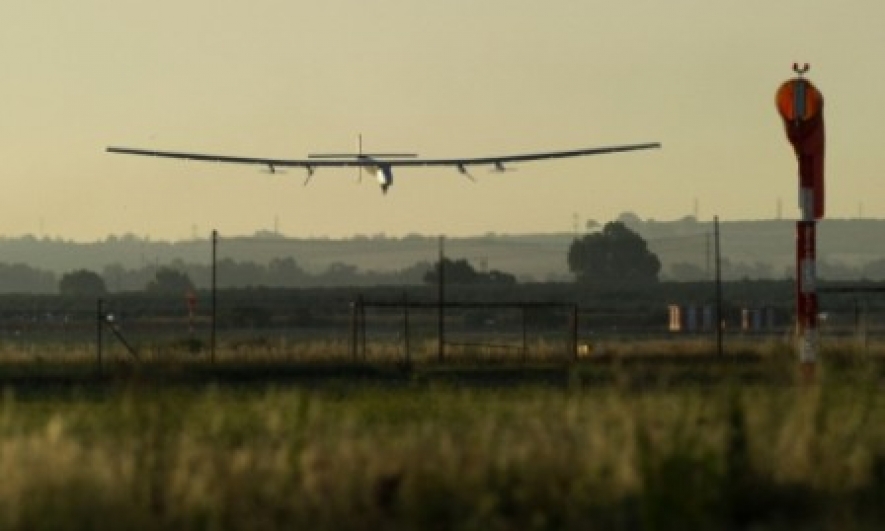Flying into the southern Spanish city of Seville as the sun rose behind him, pilot Betrand Piccard was flanked by an honor guard from the Spanish formation flying team Patrulla Aguila.
The elegant solar aircraft, which has the wingspan of a Boeing 747 but only weighs about as much as an SUV, took off from New York's JFK airport Monday night after mission engineers identified a narrow weather window in which to undertake the nearly four-day flight.
Piccard, a Swiss national who is a trained psychiatrist and balloonist, flew a total flight time of 71 hours and 8 minutes before landing in Seville. He had had a backup plan to land at various French sites if the weather made things difficult for him.
But for the modern-day adventurer, the longer the flight, the better, Piccard says.
"For an airplane that has endless endurance, you want to do the [most] you can," he said.
Piccard sent a series of tweets after takeoff, including one just as he hit the Atlantic, showing a pod of whales far below the aircraft, an iceberg that had calved from an ice floe and an oil tanker, spurring him to make the comparison between fossil fuels and the green technology employed by Solar Impulse.
Inspiration
Piccard had been preparing for the flight for "years and years," saying he'd been long inspired by the pioneers who wanted to cross the Atlantic to prove their way of transportation was mature.
"I met [American aviator] Charles Lindbergh when I was a child. I saw the balloons, the airships, the hot air balloons, steamboats -- you know, every means of transportation wanted to cross the Atlantic, and now for the first time it's a solar-powered airplane," he said.
"What I'd like to show with my team is that clean technology today is showing incredible goals. You can fly now longer without fuel than with fuel, and you fly with the force of nature, you fly with the sun. It's the new era now for energy and this is really what we'd like to inspire people to do," he said.
The Solar Impulse 2 project is the brainchild of Piccard and Andre Borschberg, a Swiss engineer and businessman. The aircraft is a single-seater, so the two men have shared the flying by taking different legs of the journey.
The plane -- powered 100% by the sun -- has now completed 15 legs of its journey.
It was originally supposed to land in Abu Dhabi, United Arab Emirates, where it began the trip in March 2015, by the end of last summer.
But a series of frustrating weather delays in China slowed progress for weeks, followed by an unexpected diversion to Japan, where the aircraft was damaged on the tarmac by a storm.
How real is the hypersonic aircraft revolution?
Borschberg flew the plane from Nagoya, Japan, to Hawaii last July in a leg that took just under 118 hours. That flight marked the first oceanic crossing for a solar-powered plane.
After crossing the Atlantic, Borschberg is now scheduled to fly to Egypt, and Piccard will likely pilot the plane on the final, historic leg from there back to Abu Dhabi.
They plan to fly the final leg of the journey by late summer, completing a 27,000-mile (35,000-kilometer) trip around the world. (CNN)



















